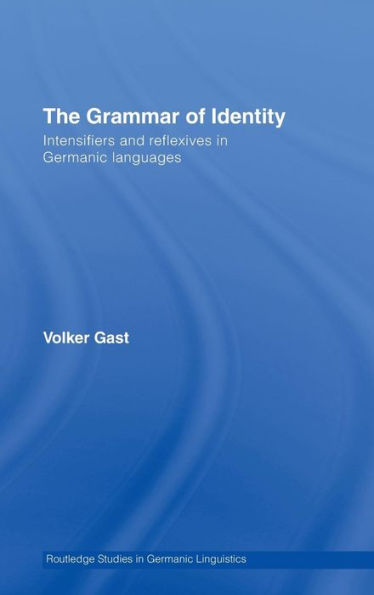In the first part of The Grammar of Identity, the most central facts concerning the distribution of intensifiers in Germanic languages are surveyed and a detailed syntactic and semantic analysis is provided. It is shown that all instances of intensifiers can be analysed as expressions of an identity function. The second part of the book offers an analysis of reflexive self-forms which is based on recent theories of reflexivity, modifying these in some important respects. In particular, the distribution of reflexive self-forms is explained with reference to semantic properties of the sentential environment. In this way, it can be shown that reflexive self-forms – like intensifiers – can be analysed as expressions of an identity function. In addition to providing a thorough comparative description of the hitherto poorly described area of intensifiers in Germanic languages, this book offers an answer to a long standing question in descriptive and theoretical linguistics, namely why self-forms are used in two apparently different functions. By combining analytical methods from syntax, lexical semantics and sentence semantics the study moreover contributes to an understanding of the interaction between structure, meaning and context in a central area of lexico-grammar.
In the first part of The Grammar of Identity, the most central facts concerning the distribution of intensifiers in Germanic languages are surveyed and a detailed syntactic and semantic analysis is provided. It is shown that all instances of intensifiers can be analysed as expressions of an identity function. The second part of the book offers an analysis of reflexive self-forms which is based on recent theories of reflexivity, modifying these in some important respects. In particular, the distribution of reflexive self-forms is explained with reference to semantic properties of the sentential environment. In this way, it can be shown that reflexive self-forms – like intensifiers – can be analysed as expressions of an identity function. In addition to providing a thorough comparative description of the hitherto poorly described area of intensifiers in Germanic languages, this book offers an answer to a long standing question in descriptive and theoretical linguistics, namely why self-forms are used in two apparently different functions. By combining analytical methods from syntax, lexical semantics and sentence semantics the study moreover contributes to an understanding of the interaction between structure, meaning and context in a central area of lexico-grammar.

The Grammar of Identity: Intensifiers and Reflexives in Germanic Languages
270
The Grammar of Identity: Intensifiers and Reflexives in Germanic Languages
270Hardcover

Product Details
| ISBN-13: | 9780415394116 |
|---|---|
| Publisher: | Taylor & Francis |
| Publication date: | 07/28/2006 |
| Series: | Routledge Studies in Germanic Linguistics |
| Pages: | 270 |
| Product dimensions: | 6.12(w) x 9.19(h) x (d) |
